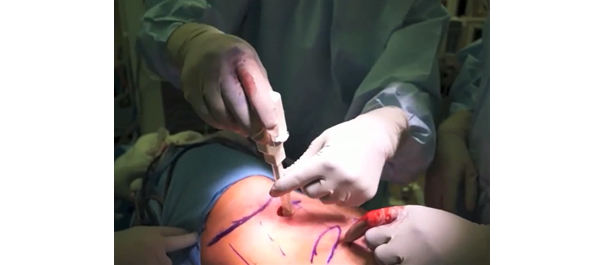Article of the Week: Early unclamping technique during RAPN can minimise warm ischaemia without increasing morbidity
Every week the Editor-in-Chief selects the Article of the Week from the current issue of BJUI. The abstract is reproduced below and you can click on the button to read the full article, which is freely available to all readers for at least 30 days from the time of this post.
If you only have time to read one article this week, it should be this one.
Early unclamping technique during robot-assisted laparoscopic partial nephrectomy can minimise warm ischaemia without increasing morbidity
Benoit Peyronnet, Hervé Baumert*, Romain Mathieu, Alexandra Masson-Lecomte†, Yohann Grassano‡, Mathieu Roumiguié§, Walid Massoud*, Vincent Abd El Fattah¶, Franck Bruyère**, Stéphane Droupy¶, Alexandre de la Taille†, Nicolas Doumerc§, Jean-Christophe Bernhard‡, Christophe Vaessen††, Morgan Rouprêt†† and Karim Bensalah
Departments of Urology, University of Rennes, Rennes, *Saint-Joseph Hospital, ††La Pitié Salpétrière Hospital, Paris, †Henri-Mondor Hospital, Créteil, ‡University of Bordeaux, Bordeaux, §University of Toulouse, Toulouse, ¶University of Nimes, Nimes, and **University of Tours, Tours, France
Objective
To compare perioperative outcomes of early unclamping (EUC) vs standard unclamping (SUC) during robot-assisted partial nephrectomy (RAPN), as early unclamping of the renal pedicle has been reported to decrease warm ischaemia time (WIT) during laparoscopic PN.
Patients and Methods
A retrospective multi-institutional study was conducted at eight French academic centres between 2009 and 2013. Patients who underwent RAPN for a renal mass were included in the study. Patients without vascular clamping or for whom the decision to perform a radical nephrectomy was taken before unclamping were excluded. Perioperative outcomes were compared using the chi-squared and Fisher’s exact tests for discrete variables and the Mann–Whitney test for continuous variables. Predictors of WIT and estimated blood loss (EBL) were assessed using multiple linear regression analysis.
Results
In all, there were 430 patients: 222 in the EUC group and 208 in the SUC group. Tumours were larger (35.8 vs 32.3 mm, P = 0.02) and more complex (R.E.N.A.L. nephrometry score 6.9 vs 6.1, P < 0.001) in the EUC group but surgeons were more experienced (>50 procedures 12.2% vs 1.4%, P < 0.001). The mean WIT was shorter (16.7 vs 22.3 min, P < 0.001) and EBL was higher (369.5 vs 240 mL, P = 0.001) in the EUC group with no significant difference in complications or transfusion rates. The results remained the same when analysing subgroups of complex renal tumours (R.E.N.A.L. nephrometry score ≥7) or RAPN performed by less experienced surgeons (<20 procedures). In multivariable analysis, EUC was predictive of decreased WIT (β –0.34; P < 0.001) but was not associated with EBL (β –0.09, P = 0.16).
Conclusions
EUC can reduce WIT during RAPN without increasing morbidity even for complex renal tumours or when being performed by less experienced surgeons.


